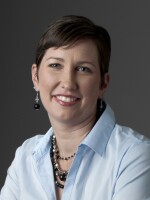Oenophiles have debated the most desirable characteristics of bubbles in champagne and sparkling wines for centuries, with most purists swearing that the smaller the bubble, the better the wine. But up until recently, few thought to listen to the bubbles themselves for answers.
Scientists at the Applied Research Laboratories at the University of Texas in Austin normally measure the sound of inflating fish bladders and bubble curtains that dampen noise from underwater drilling. This time, they decided to listen in on champagne bubbles. "It was just nerdy curiosity," says Kyle Spratt, who led the research at UT.
"Our first inclination was to drop a hydrophone (underwater microphone) into a glass and see what sort of sounds we heard," Spratt says.
And, how do sparkling wine bubbles sound? With the right listening equipment, "they ring like bells," he says. And the more expensive bottle did indeed have smaller bubbles, he found.
He presented his findings earlier this month at the Acoustical Society of America's annual meeting in New Orleans.
Spratt and his team listened to the bubbles and analyzed their sounds to determine bubble size and distribution in the glass. "The pitch at which a bubble rings is related to its size: The smaller the bubble, the higher the pitch," he said in his presentation.
By tracking how bubbles form and bounce off the glass to ring at various frequencies and pitches, Spratt and his team were able to get a sense of the range of bubble sizes within the individual wines.
But the bubbles weren't so simple to measure. The hydrophone had to be extremely small. And the scientists figured out pretty quickly that the vessel holding the sparkling wine had to be a proper flute.
Bubbles behave differently on different surfaces, like glass as opposed to Styrofoam, explains Spratt. "In particular, Styrofoam isn't a smooth surface, but rather, has a bunch of little pockets in it, and because of this, bubbles stick to the surface for longer before breaking off," he says. The bubbles in a Styrofoam cup are larger and fewer, and therefore sound very different.
As an aside, Spratt says his methods irked some French scientists who were in the room when he presented his findings. "They were all basically horrified that we'd even think to put champagne into a Styrofoam cup!"
For simplicity's sake, Spratt and his colleagues only looked at two wines — the pricey French Moët & Chandon champagne and a cheaper California bubbly by Cook's. While you can't tell much difference with the naked ear (see if you can tell the difference in the raw sound clips), they analyzed them and discovered that the Moët & Chandon had slightly smaller bubbles (about 5 percent smaller), slightly less variation in bubble size and three times the amount of overall bubble "activity," i.e. movement in the glass.
But sound alone doesn't tell you everything. There are other potential factors in determining wine quality based on bubbles. The pour, for one, can make a difference in how many busy bubbles you get in the glass.
Also, the age of the bottle can make a difference. "Old champagnes always show tiny bubbles, mainly because they have aged several years and lost a significant amount of dissolved CO2, the gas that produces the bubbles," French chemist Gerard Liger-Belair, author of Uncorked: The Science of Champagne, told us a few years back.
So what if you can only afford the $10 sparkling wine this New Year's Eve? It turns out that bigger bubbles in your wine is not necessarily a bad thing. A recent French study indicates that when bigger bubbles pop, they give off more aromas.
Spratt acknowledges that his data on the bubble acoustics of sparkling wine and champagne is preliminary, but he sees the sound measurement effort becoming a useful quality assurance tool for winemakers.
April Fulton is a freelance writer and editor and the former host of The Salt. Find her on Twitter@fultonhere.
Copyright 2021 NPR. To see more, visit https://www.npr.org. 9(MDAxODc1ODA5MDEyMjg1MDYxNTFiZTgwZg004))



